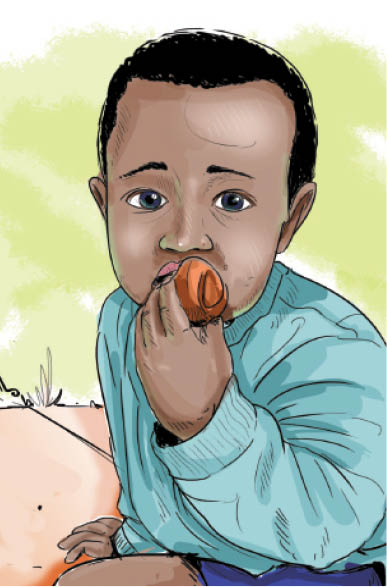Abike’s three-year-old daughter had a fever and she took her to the University of Abuja Teaching Hospital (UATH), Gwagwalada, Abuja.
However, while the doctor was examining her, the little girl suddenly convulsed. This left her mother very unsettled.
- Akintoye wants UN to declare Miyetti Allah terrorist group
- EFCC arrests 87 ‘internet fraudsters’ in Ogun, Edo
The doctor had to reassure Abike that all would be well with her daughter.
A paediatrician, Dr. Kuti Demilade Kehinde, says convulsions may occur in children when the brain functions abnormally, resulting in a change in movement, attention, or level of awareness.
“A child could have a convulsion that is associated with fever. In this case, malaria is the cause of the convulsion. Again, you have convulsions due to infections.
“Also, convulsion can be as a result of chest infection like chronic pneumonia, it could also result from meningitis – that is the infection of the brain. Also, infection of the urinary tract could lead to convulsion,” she said.
The physician said febrile convulsion (caused by malaria) may begin with the sudden contraction of muscles on both sides of a child’s body, usually the muscles of the face, arms, and legs.
The child may cry or moan from the force of the muscle contraction. The contraction continues for several seconds or tens of seconds. The child will fall, if standing, and may pass urine.
According to her, convulsions in children have many different types of symptoms. A thorough description of the type of movements witnessed, as well as the child’s level of alertness, can help the doctor determine what type of seizure the child has had.
She said the most dramatic symptom is generalized convulsions, whereby the child may undergo rhythmic jerking and muscle spasms, sometimes with difficulty breathing and rolling eyes. “The child is often sleepy and confused after the convulsion and does not remember the convulsion afterwards.”
Dr. Kehinde said diagnosing a convulsion can be tricky, noting: “Convulsions are over so quickly that your doctor probably will never see your child having one. The first thing a doctor needs to do is rule out other conditions, such as non-epileptic convulsion.”
Non-epileptic convulsions, she said, may resemble seizures, but are often caused by other factors such as drops in blood sugar or pressure, changes in heart rhythm, or emotional stress.
“Your description of the convulsion is important to help your doctor with the diagnosis. You should also consider bringing the entire family into the doctor’s office. The siblings of children with epilepsy, even very young kids, may notice things about the seizures that parents may not.
“Also, you may want to keep a video camera handy so that you can tape your child during a seizure. This may sound like an insensitive suggestion, but a video can help the doctor enormously in making an accurate diagnosis.”
She said some kinds of convulsions, such as absence convulsions, are especially difficult to diagnose because they may be mistaken for daydreaming.
Dr. Kehinde said there is no 100 per cent guaranteed way to prevent febrile convulsions but the following steps may help:
– Monitor the temperature with your digital thermometer
– When a child has fever, avoid it getting too high
– The best ways to bring your child’s temperature down are by undressing him and perhaps allowing him to wear pants); make sure the room is not too hot or too cold and giving Paracetamol.
– Ensure the child receives early treatment depending on the cause of the fever.
– You can also tepid-sponge by rubbing the child’s body with a wet towel dipped in “normal” tap-water temperature; NOT ice-cold or hot water, please.
The paediatrician said the treatment of children with convulsions is different from treatment for adults, adding that unless a specific cause is found, most children with first-time convulsions will not be placed on medications.
She said the important reasons for not starting medications include:
– Many convulsion medications have side effects including damage to your child’s teeth or liver.
– During the first visit, many doctors cannot be sure if the event was a convulsion or something else.
She said parents play a key role in making sure their child with convulsion is safe, while still allowing them to participate in many of the typical activities of childhood.
Dr Kehinde advised parents to ensure their child’s school or daycare knows about the convulsion medication, and that arrangements are made to take it at school.

 Join Daily Trust WhatsApp Community For Quick Access To News and Happenings Around You.
Join Daily Trust WhatsApp Community For Quick Access To News and Happenings Around You.


